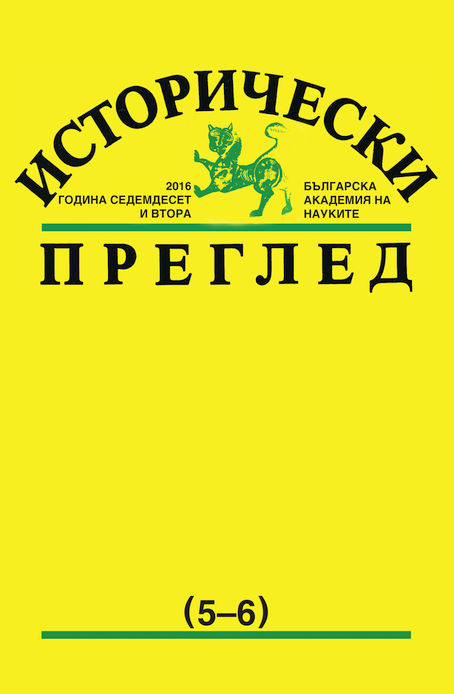
We kindly inform you that, as long as the subject affiliation of our 300.000+ articles is in progress, you might get unsufficient or no results on your third level or second level search. In this case, please broaden your search criteria.



The establishment of Czechoslovakia in 1918 was refused by a large proportion of its inhabitants, mainly from the part of Czechoslovak Germans and Hungarians. Beside them, a certain number of Slovaks rebelled against the state project of Czech and Slovak political elites as well. Some of them preferred to remain in the frame of the historical Hungary because they shared with Hungarians for centuries transmitted cultural patterns and cultural repertoire, the use of which came by implementing the idea of Czechoslovakism to the threat. Rebelling attitudes against Czechoslovak statehood were registered especially in the ethnically heterogeneous regions and cities which were located in the contact zone between the territories with the majority Slovak population on the one side and the minority Hungarian one on the other. Analysing the archival documents, the author of the paper focuses firstly on reactions of indigenous inhabitants of Slovak origin of the city of Košice to the establishment of Czechoslovakia, secondly, on pursuits of the political elites to implement the Czechoslovak state idea in the public space of the city, its successes, failures and tensions between the Czechoslovak and Slovak (autonomous) camps of nationalists. Thirdly, the analysis of the electoral behaviour stands in the spotlight, according to which the majority of local indigenous Slovaks voted the oppositionist parties what indicates that, in the long term, the idea of the Czechoslovak state was refused by these inhabitants. The purpose of the study lies in recognizing differentiated attitudes of the Slovak interwar (mainly urban) society to the Czechoslovak statehood and, hence, in outlining an alternative story to the traditional, in the cultural memory reproduced narrative about the establishment of Czechoslovakia as a “national liberation”.
More...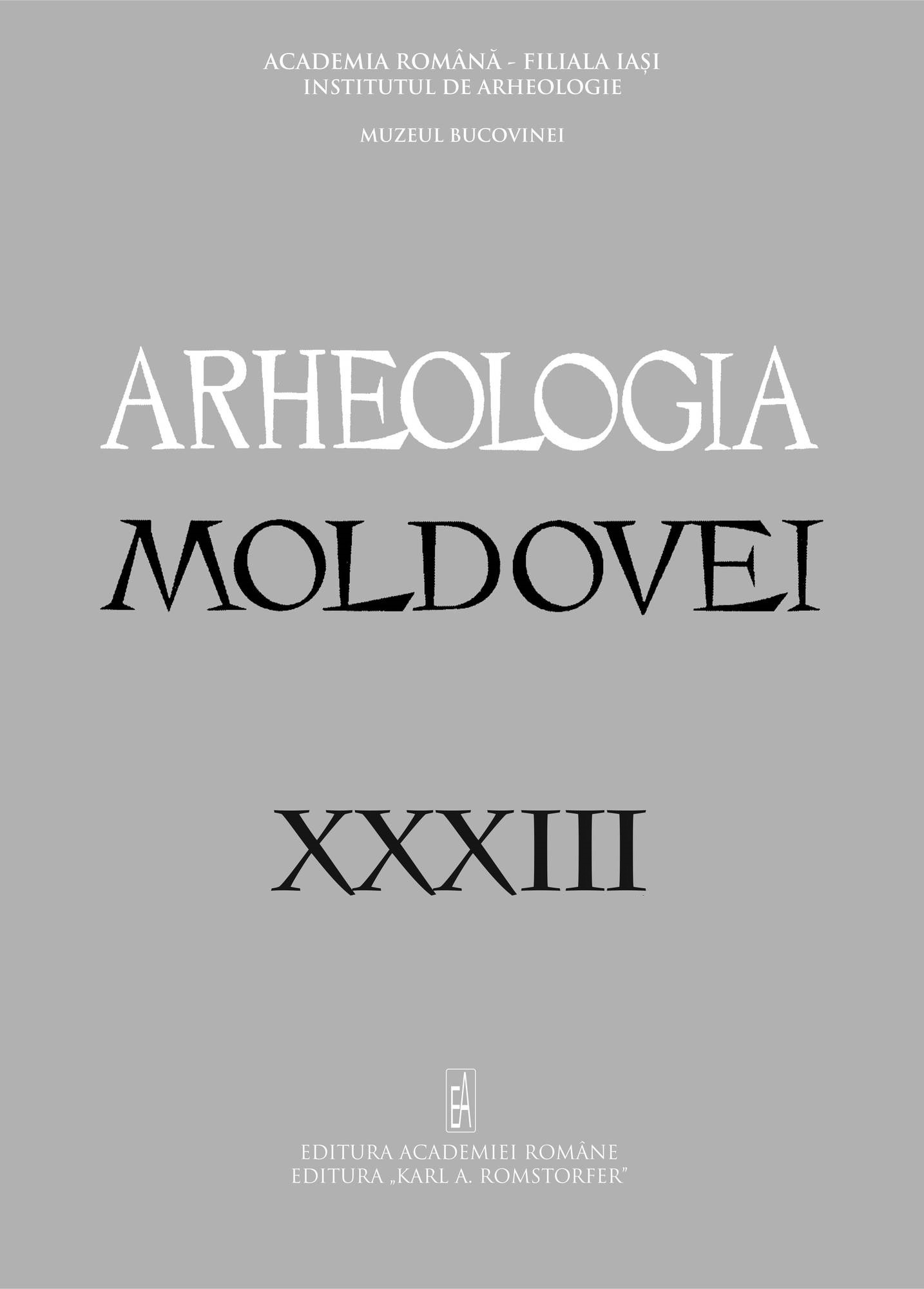
Il y a plus d’un demi-siècle, dans un compte-rendu d’une grande acribie savante, fait pour le premier volume de la seconde édition de l’opus fondamental de Gyula Moravcsik, Byzantinoturcica, I, Die byzantinische Quellen der Geschichte der Türkvölker, Berlin, 1958, inséré dans le périodique Византийский временник, XVI, 1959, p. 271–287, Alexander Kazhdan a inclus le texte original d’un court traité de géographie réalisé par un auteur byzantin anonyme, mais sans y annexer cependant quelque commentaire. Son manuscrit est gardé dans les fonds du Musée d’Histoire de l’Etat, à Moscou (No. 415/509, pages 76–77 verso). Ce traité anonyme reflète les connaissances géographiques accumulées à un moment donné à propos de l’espace terrestre, tout en faisant aussi mention du nom de la Dacie, sous sa forme corrompue Δακεία, à la place de Δακία. Vu quele texte présentait un intérêt plus large et que, à ce que nous sachions, il n’avait pas encore attiré l’attention des spécialistes roumains, nous avons considéré nécessaire de le signaler dans une Addenda, jointe à une étude plus ancienne, réimprimée sur l’initiative des collègues de Bessarabie dans un volume paru aux Editions Cartdidact de Chişinău. A cette occasion-là j’ai formulé quelques considérations sur la description géographique byzantine, tout en précisant que celle-ci reflétait de façon prioritaire la structure de la mappemonde pendant l’Antiquité, l’auteur se permettant des rajouts infimes, avec des données afférentes à une période ultérieure, entre autres mentionnant les Hongrois (Ούγγροι). Peu avant l’apparition du volume de Chişinău, Sergey A. Ivanov a republié le texte de la description géographique dans un prestigieux périodique consacré à la civilisation byzantine de la capitale de la France, l’accompagnant d’une traduction en anglais et de certains commentaires, étude qui, par malheur, nous était inconnue à l’époque où nous avions rédigé l’Addenda à l’article dont on a fait mention. C’est pourquoi nous nous proposons, en l’occurrence – nous servant de l’ouvrage susmentionné –, de présenter la traduction roumaine pour le contenu du traité anonyme et de formuler quelques succinctes considérations en marge de celui-ci. Sergey A. Ivanov a observé que, à la différence de l’Europe Occidentale, où les informations du microtraité sont parfois erronées (par exemple la localisation de certaines provinces de la Gaule en Ibérie) et sommaires (ex.: on ignoredes centres urbains fameux, comme Rome, Venise etc.), les données sur le réseau urbain de l’Asie Mineure sont plus abondantes et plus correctes. Cette remarque concerne autant les villes byzantines, que celles détenues par les Turcs Seldjûqides, ce qui a permis l’hypothèse de l’origine anatolienne de l’auteur de cet ouvrage. D’autre part, il a avancé comme moment d’élaboration pour la description géographique la période comprise entre les années 1366–1390. Personnellement, on considère que ce diapason chronologique est de beaucoup trop restreint, c’est pourquoi il devrait être élargi pour le moins à la seconde moitié du XIVe siècle tout entière. Quant au nom de la Dacie, hormis son utilisation en connexion avec les réalités du monde antique au nord et au sud du Bas Danube, il a été employé au Moyen Age pour désigner la Danie / le Danemark (confusion parfois délibérée,d’autres fois inconsciente), mais aussi pour la nominalisation anachronique de certaines entités d’Etats de l’espace carpato-danubien disparues de la scène géopolitique continentale ou de certains territoires qui avaient acquis d’autres dénominations (Gothia, Gepidia, Avaria, Sclavonia, Patzinakia, Cumania, etc) après le recul de l’administration romaine et après le déferlement des grandes migrations germaniques et slaves. Parallèlement au nom de la Dacie, en différents écrits élaborés par les chroniqueurs et les lettrés byzantins à la fin du premier millénaire et à la première moitié du millénaire suivant on enregistre l’emploi à sens archaïsant de l’ethnonyme Daces, désignant les Serbes, les Hongrois, les Petchénègues, les Roumains etc. Outre les sources narratives, la Dacie du Bas Danube figure en plusieurs cartes datant d’une période proche de la date d’élaboration du minitraité byzantin. Parmi ces sources cartographiques, de notoriété restent notamment les cartes d’Ebstorf et d’Hereford, faites vers le milieu du XIIIe siècle et, respectivement, autour del’année 1300, de même que l’atlas catalan réalisé entre les années 1374–1376 à Mallorca, attribué à Abraham Cresques. La mention de la Dacie en plusieurs catégories de sources à l’époque médiévale, autant à l’Occident, qu’au Byzance, fait preuve que les échos de son rôle sur l’échiquier politique du monde antique s’est perpétué de façon viablele long des siècles.
More...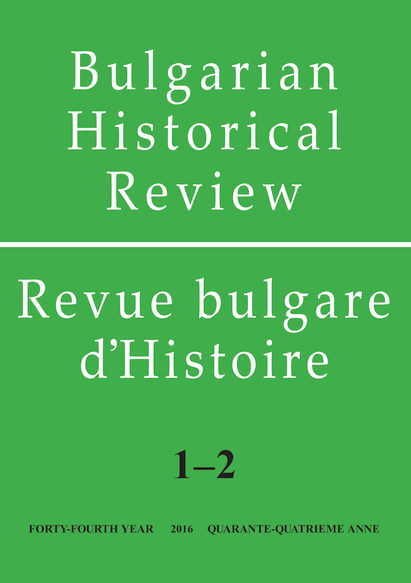
The analysis of some written sources and the estimation of Stalin’s political behaviour bring to the conclusion that in the Balkan politics of the Soviet leader did not exist real wish and targeted actions towards creating a communist federative union in the Balkan peninsula, despite the fact that many historians support the opposite opinion – that the Soviet leader aimed at establishing such federation. Stalin used the federative idea to understand in details and to use the contradictions between the Balkan countries with communist rule on the question of federation. With this manipulative policy Stalin wanted to strengthen the role of Moscow in the relationships between the Balkan communist states as part of the main strategy – the creation of a block of countries in Eastern Europe under the power of Kremlin. The article shows how the federative idea came down from the Balkan political stage. This process occurred after the famous Soviet-Yugoslav-Bulgarian meeting on February 10, 1948 in the Kremlin and it was connected with the outbreak of the Soviet-Yugoslav conflict in 1948. The article also reveals how the communist leaders in the Balkans did not understand the manipulative policy of Stalin on the question of federation.
More...
The paper put under analysis the dynamics of the slow but gradual rapprochement in the relations between Democratic People’s Republic of Korea (DPRK) and the USSR and the Soviet Bloc from the second half of 60s and the beginning of the 70s of the XXth century. That change is fully related with the shift of the whole geopolitical paradigm of the Cold War in East Asia that became clearly visible since the end of 60s and the beginning of the 70s which is mostly related with the rapprochement between USA and PRC as a consequence from the Sino-Soviet split. This important geopolitical shift has its important impact on the international relations in the region as well as on the situation on the Korean peninsula. One of the main consequences was the new change of the North Korean position from a Chinese ally within the Sino-Soviet split at the beginning of the 60s to a neutral and rather pro-Soviet position at the end of 60s and the beginning of 70s. It was of a great importance for the Soviet Union to somehow counterbalance the new Chinese policy of the US. From this point of view any possibility to bring back the DPRK along to its side was considered from the USSR as an opportunity to return its influence and positions of power in East Asia. The new geopolitical shift which created also new possibilities for solving the Issue about the Korean unification gave the Soviet Union and its ally countries a new political tool used for the returning DPRK back to the positions of the Soviet bloc against China and USA. This tool was the support (both economic and political) that DPRK desperately needed and the Soviet bloc countries provided to North Korea defending its positions within the International community and mainly in the UN. Through the analyses of various Bulgarian archival materials becomes clear that in that process of rapprochement between DPRK and the Soviet Bloc from in the beginning of the 70s, very important role has been played by Bulgaria itself which turned out to be a kind of mediator between USSR and North Korea. To some extent Bulgarian government played the role of mediator or transmission in the dialog between Moscow and Pyongyang. At the same time it is clearly visible that both countries, Bulgaria and DPRK, took the advantage of the new change in the general geopolitical situation in the East-West relations at the end of the 60s and the beginning of 70s that offered them a new possibilities and opportunities for more intensive and mutually beneficial political and mostly economic relations.
More...
This article explores the emergence and spread of American cultural and information centers and libraries around the world. The analysis shows that they were one of the first initiatives of the emerging American public diplomacy at the turn of the 20th century, which became an effective tool for reaching out to the outside audience, with a view to enhance the understanding and acceptance of the policies of the United States during the Cold War. In the mid–1990s the US Congress reduced their funding in an attempt to reduce the federal spending abroad. The terrorist attacks of September 11, 2001, and the worsening of USA’s appearance abroad, however, served as an indication that their closure was a mistake. In an attempt to remedy that mistake, the federal government has created a dense network of governmental and the so-called American partner spaces of different size and type, but united by the mission of attracting foreign audiences through the development of numerous information, educational and training programs.
More...
Muftis are the religious and legal experts in the Muslim societies. One of their main functions was to issue legal opinion and thereby influence the decisions of the judges and political authorities. They served as such in the Ottoman Empire. The judges generally concluded the cases in the light of fatwas. In other words, muftis were important figures in the Ottoman religious and legal system. For this reason, it is important to find out their appointment and dismissal procedure to their official posts. This article outlines the historical background and the qualifications of the Muftis. Afterwards, it analyses their appointment and dismissal decrees recorded by the judges in their law court registers which have been preserved at the St. St Cyril and Methodius National library of Bulgaria.
More...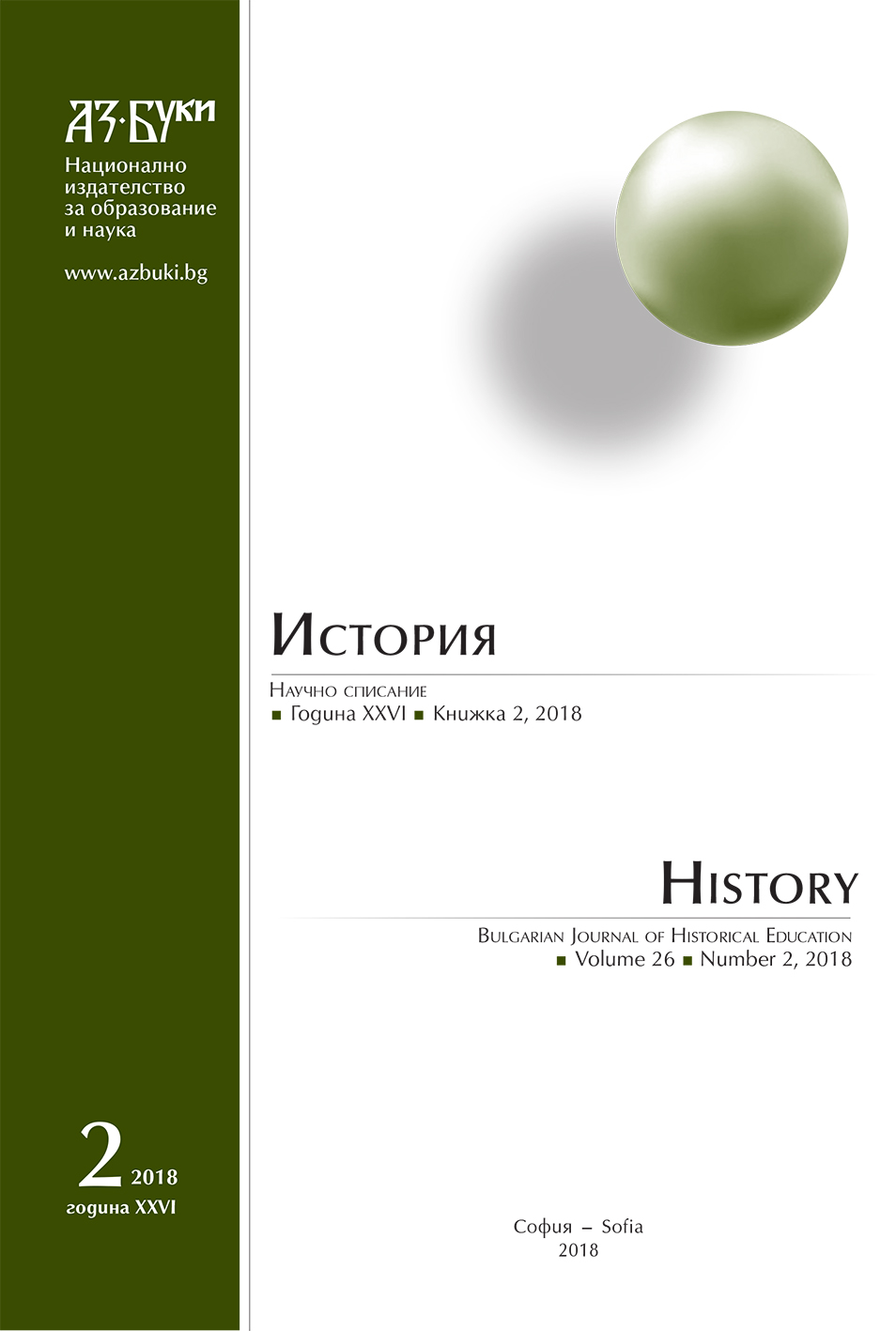
The article is devoted to the analysis of interaction between government and parliament in historiography of the XX century. This period is characterized deepening of research the separate aspects of cooperation between government and parliament. At the same time there is a change of accents in the study of this theme. It was related to increase of volume of government work, complications of functions of state administration and strengthening of role of executive power at the beginning ХХ of century. Special attention was paid to the analysis of the evolution and evaluation of the effectiveness of the delegated legislation in European countries. It is also needed to mark that this period is presented mainly West-European and American historiography, because for researchers of socialist countries this theme was not actual.
More...
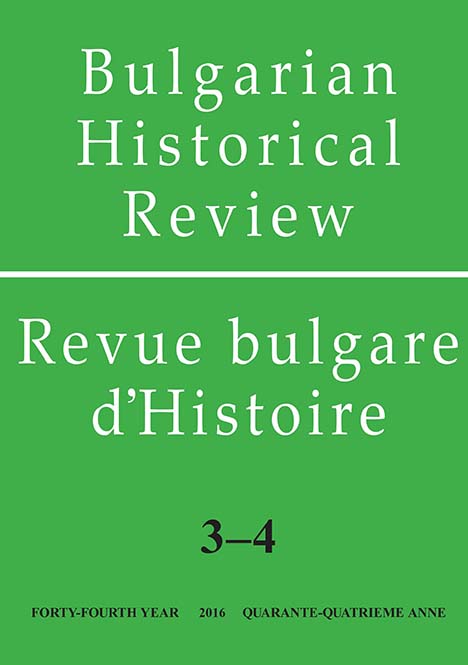
Bulgaria’s educational policy towards the Muslim minority was determined by international and bilateral treaties, state legislation, economic and social processes in Bulgarian society and was influenced by the foreign policy goals of the state. From a spiritual point of view, the main educational center of the Muslim community in Bulgaria was created after the end of the First World War. The Quranic School in Shumen “Madrasa-t-yun-Nyuvvab” was the only one of its kind in the Balkans. In the 1930s his graduates were the first Bulgarian citizens sent to attend the Egyptian Al-Azhar Spiritual Academy.
More...

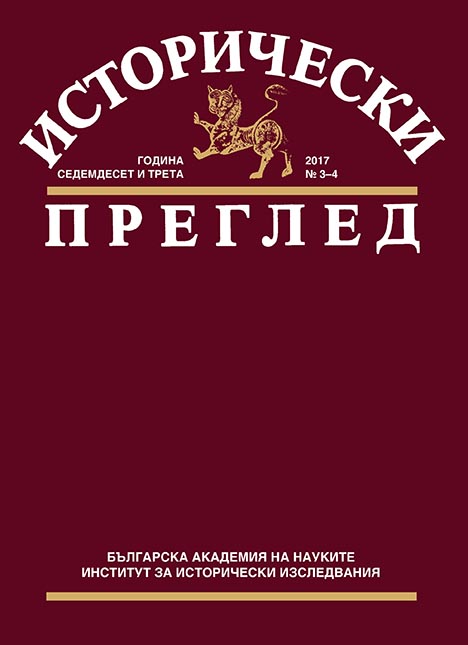
We rarely find a document to show us the motivation with which a researcher sits to write a book. In the personal archive of Hristo Gandev, kept in the Central State Archives, a notebook is preserved, in which the Bulgarian historian wrote a short note on why and how he should write his study about the great Bulgarian revolutionary Vasil Levski. Here, this text is published for the first time and is delivered without abbreviations and in its authentic style, spelling and language.
More...
The activity of the Macedonian/Macedonian-Odrinian Society in Varna is part of the joint effort of the Bulgarians from the Principality of Bulgaria for the liberation of their compatriots who remained under Ottoman rule. Although located hundreds of kilometers from enslaved Macedonia, the Varna Society stands out as one of the most numerous and well-organized in the country. Its support for the revolutionary movement was mainly financial and material, but it was also directly involved in the liberation struggle sending revolutionists and arms to Macedonia and the Odrin region.
More...
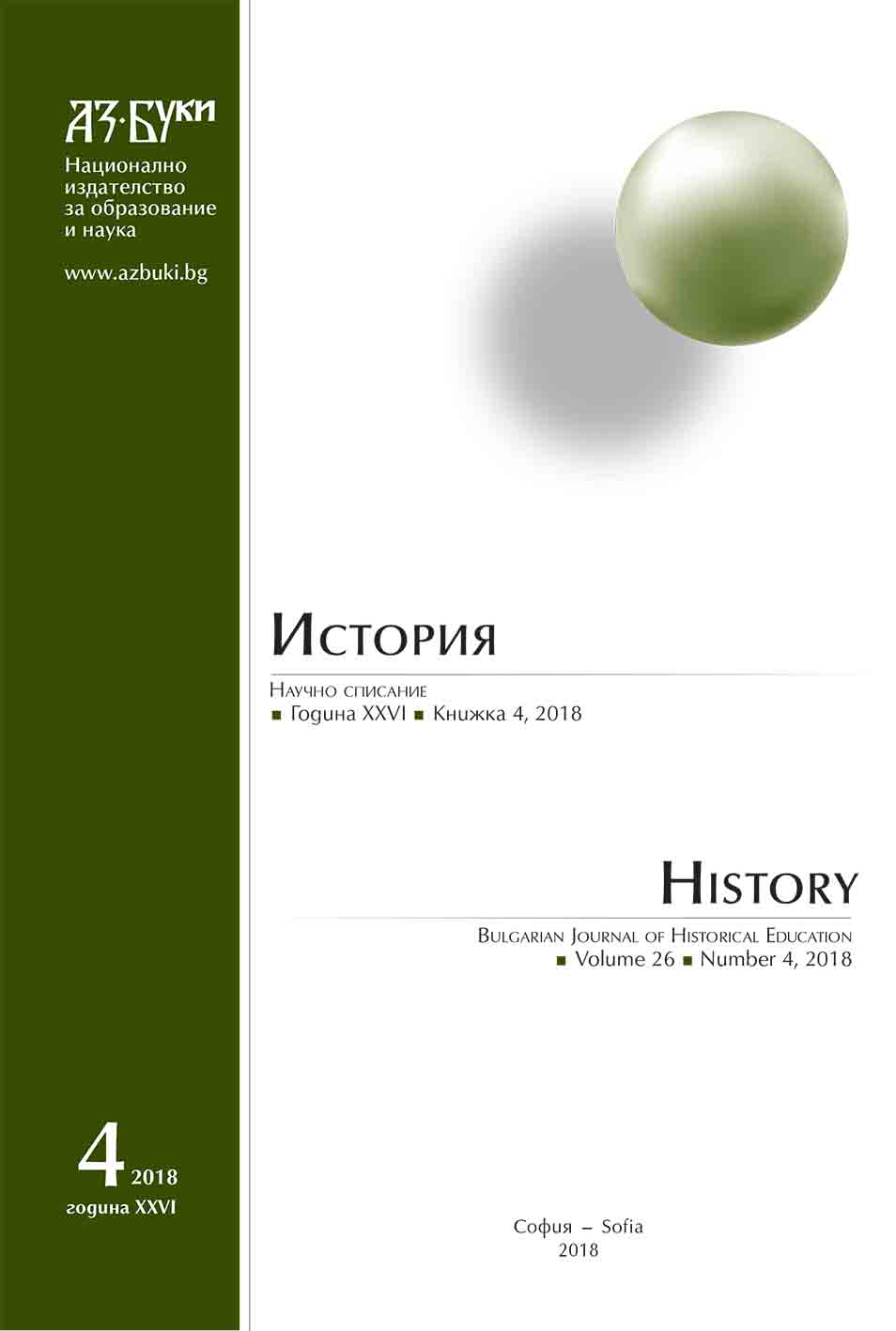
The article focuses on the semi-autonomous possessions in the north-western Bulgarian lands between the end of the XII and the beginning of the XIV century. The main accent is placed on Vidin region. The political model formed there at the end of the XIII and the beginning of the XIV century was mentioned as the basic prerequisite for the future development of the area in the middle and the second half of the XIV century.
More...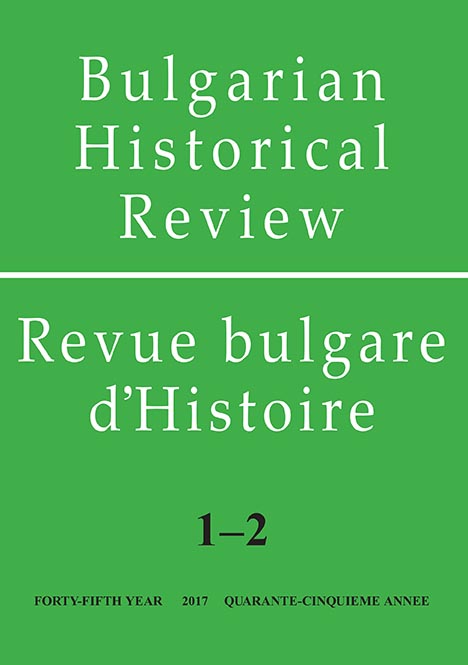
The end of the Russo-Turkish War of 1877–1878 and the subsequent decisions taken at the Berlin Congress of 1878 set the beginning of the state-building process of modern Bulgaria. The newly established nation-state quite naturally and purposefully sought an immediate emancipation from its political past and radical breaking with the inherited Ottoman institutions. This particular goal found direct reverberation in the consequent “de-Ottomanization” of Bulgaria during the process of homogenization of the Bulgarian nation. The Ottoman pious foundations (vakf) and their vast possessions, whose incomes provided for the maintenance and the functioning of the religious and other buildings, regarded by some as a direct implementation of the Ottoman imperial past, fall at the center of the state-building policies of the new Bulgarian state. The article examines one such particular charitable foundation, namely the vast vakf of the Mihaloğlu family in the region of Pleven, during the years after the establishment of the independent Bulgarian state and argues that it could be considered as an emblematic case elucidating aspects of the state-building ideology in the Bulgarian national politics in general and the uneasy process of decisive rupture with the imperial heritage that the new nation-state had to walk through in particular.
More...
The interest to the activity of Stefan Stambolov has increased significantly in contemporary Bulgaria. On the one hand it has been caused by insufficient study of some aspects of his policy. On the other hand, it is a result of socio-economic, political and moral crisis in the Bulgarian society after the events taken place in the late 1980s. Stambolov as a historical figure has become an important element of the national politics of memory. And it resulted in a growing interest of the researchers in his activities. However the negative effects of the policy could be deliberately concealed by scientists, journalists and writers in a favour of statesmen. The political legacy of each historical figure who marked the next step in a history of any country, is an important factor that influence a course of political, social, economic and cultural processes. Its study can significantly adjust the established notions about activities of a particular politician, its importance to the state-building processes. The subject of our study is a sophisticated phenomenon and its research requires a number of methodological techniques.
More...